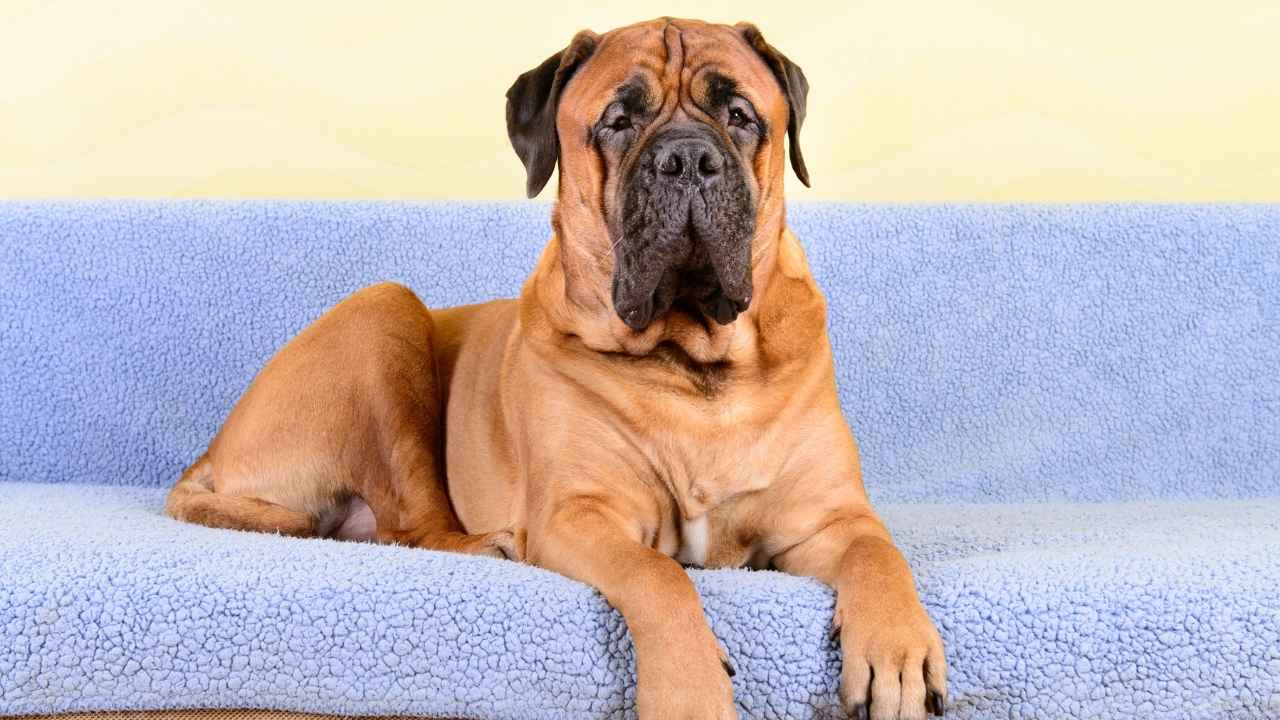Not all dogs are the right match for every household, and that’s perfectly okay. While some breeds make ideal companions for first-time pet parents or families with young children, others require a level of experience, patience, and lifestyle compatibility that not everyone can provide. Whether it’s due to high energy, intense grooming needs, or a strong prey drive, certain breeds may not be the best fit for every home.
Choosing the wrong breed can lead to frustration for both the pet and the owner. Dogs that are overly protective, prone to aggression, or simply too energetic for your lifestyle can quickly become overwhelming. It’s important to understand that labeling a breed as one of the “worst” doesn’t mean they’re bad, it just means they may pose challenges that not everyone is equipped to handle, especially new dog owners or families with small kids.
In this article, we’ll highlight dog breeds that tend to be poor fits for novice owners or families looking for a laid-back, easygoing pup. By learning more about these challenging breeds, you’ll be better equipped to make a thoughtful and informed choice when it comes to adding a furry friend to your life.
Worst Dog Breeds
1. Akita
The Akita may be a striking and loyal breed, but it’s not the best choice for inexperienced dog owners or families with frequent visitors. Originally bred for guarding royalty in Japan, Akitas are known for their independence and intense loyalty.
These traits, while admirable, can become problematic in modern households where unfamiliar guests or children are common. Their strong protective instincts can lead them to misinterpret typical kid behavior, like squealing or roughhousing, as threats.
Temperament
This hunting breed is a quiet, clean dog, but its reserved nature around strangers can quickly escalate into defensiveness if it feels its family is at risk. Without rigorous early socialization and confident, consistent leadership, Akitas may become territorial and challenging to manage.
Their natural distrust of other animals can also make multi-pet homes difficult. Training requires patience and firmness, and their large size only adds to the need for early obedience work.
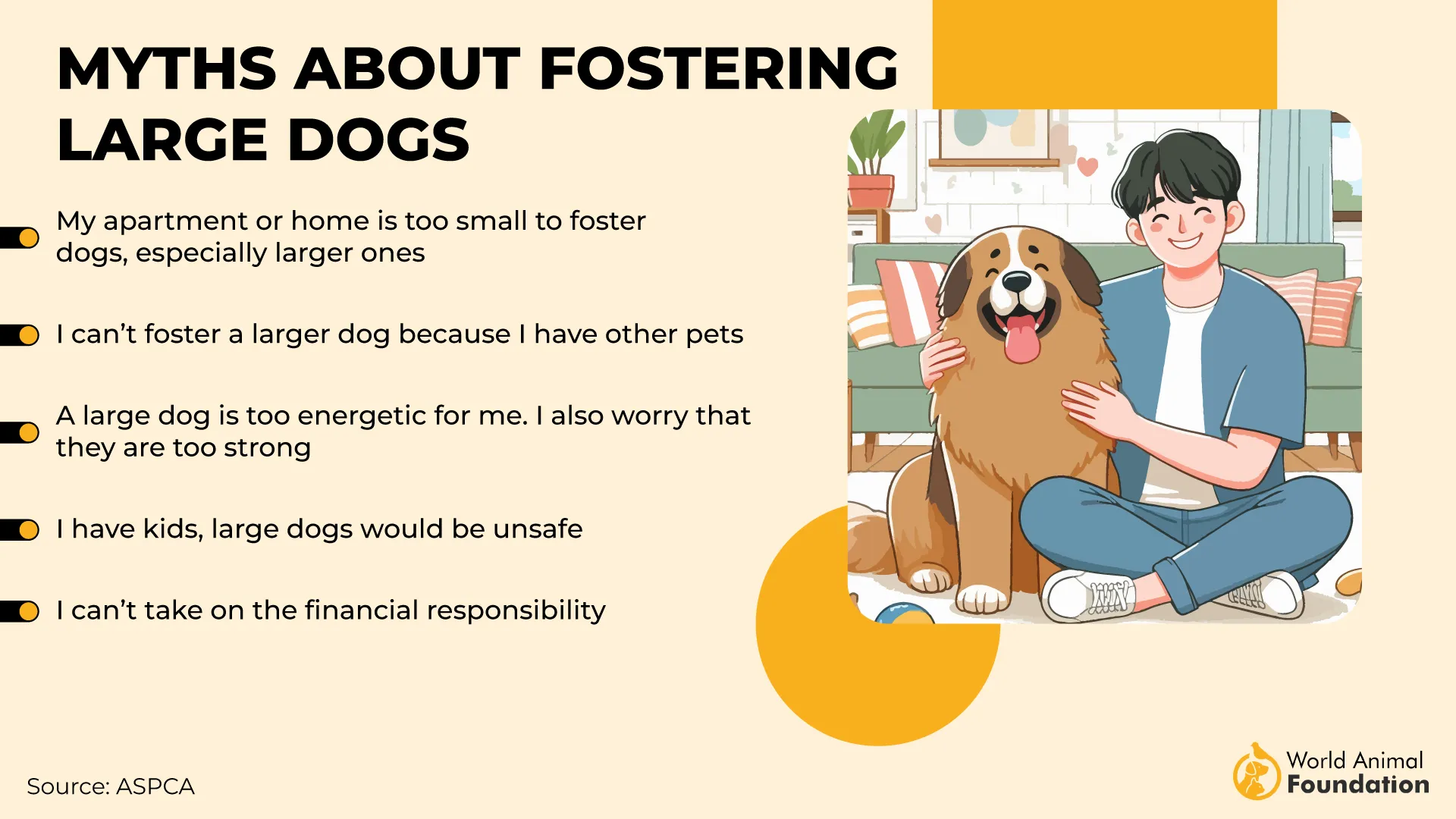
Fun Fact: In Japan, Akitas are seen as symbols of happiness and good health, but their deeply ingrained guarding instincts can make them risky around unfamiliar children or guests.
2. Bullmastiff
According to PetMD, the Bullmastiff is a large dog breed known for its loyalty and affectionate nature. The Bullmastiff’s size and stubborn nature make it a tough match for new dog owners or households with small children.
Weighing upwards of 100 pounds, this breed doesn’t always realize its strength, and while friendly and affectionate with family, they can easily knock over toddlers during play. Their tendency to drool, combined with destructive behavior when left alone too long, adds to the challenges of managing this gentle giant in the wrong environment.
Temperament
Despite their sweet and loyal disposition, these affectionate dogs are naturally headstrong and can be difficult to handle without confident leadership. They require firm, consistent training from an early age and thrive best with structured routines and lots of socialization.
Their wariness around unfamiliar people makes early exposure to different environments critical. Without it, they can become overly protective or even territorial, which is less than ideal for households that frequently welcome guests.
Fun Fact: Bullmastiffs often think they’re lapdogs despite their massive size, which can make for some amusing (and potentially hazardous) cuddle sessions in homes with young children.
3. Chow Chow
Britannica describes the Chow Chow as one of the oldest dog breeds, distinguished by its lion-like mane, thick double coat, blue-black tongue, and stiff-legged gait. The Chow Chow may resemble a fluffy teddy bear, but its personality often tells a different story, making it one of the more challenging breeds for novice dog owners or families with young kids.
This ancient guardian breed is notoriously independent and can be stubborn, aloof, and resistant to training. While their reserved demeanor may appeal to some, their low tolerance for chaos or unfamiliar people can be a major hurdle in busy households.
Temperament
This guard dog tends to be distant with strangers and even aggressive if not properly socialized from an early age. They don’t typically seek out affection and may react poorly to hugging, grabbing, or the high-pitched excitement that children naturally bring.
Though they’re loyal to their families, their affection tends to be reserved, and they often prefer solitude. Their natural instinct to guard can easily be mistaken for grumpiness or disobedience without consistent training and clear boundaries.
Fun Fact: Despite their cuddly appearance, Chow Chows generally dislike hugs and can become reactive if startled by screaming or fast-moving children.
4. Dalmatian
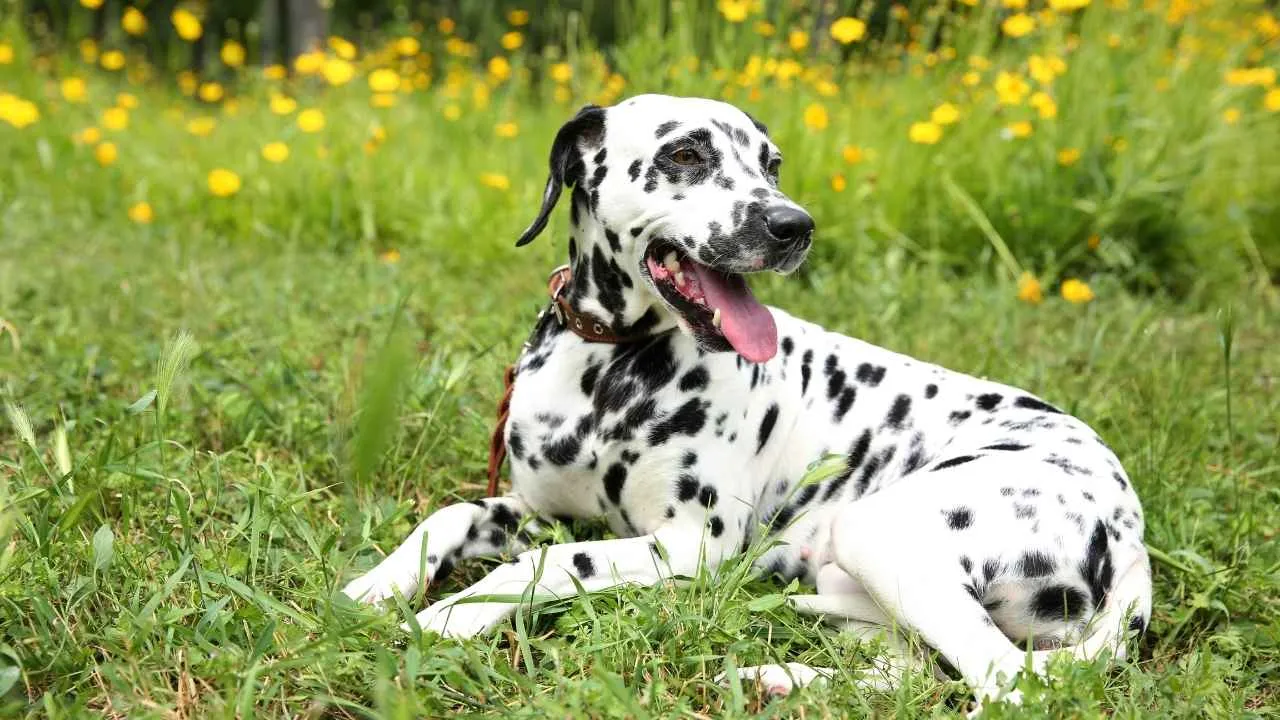
Hill’s Pet states that the Dalmatian is an elegant, medium-sized breed with a smooth, muscular build. Despite their popularity and iconic spotted coats, Dalmatians are often a poor fit for many households, especially those with very young children or limited space.
While visually appealing and deeply loyal, Dalmatians are intensely energetic and require constant mental and physical stimulation. Without sufficient outlets for their energy, they can become destructive or develop behavioral issues, making them a challenging choice for first-time dog owners or families with a more relaxed lifestyle.
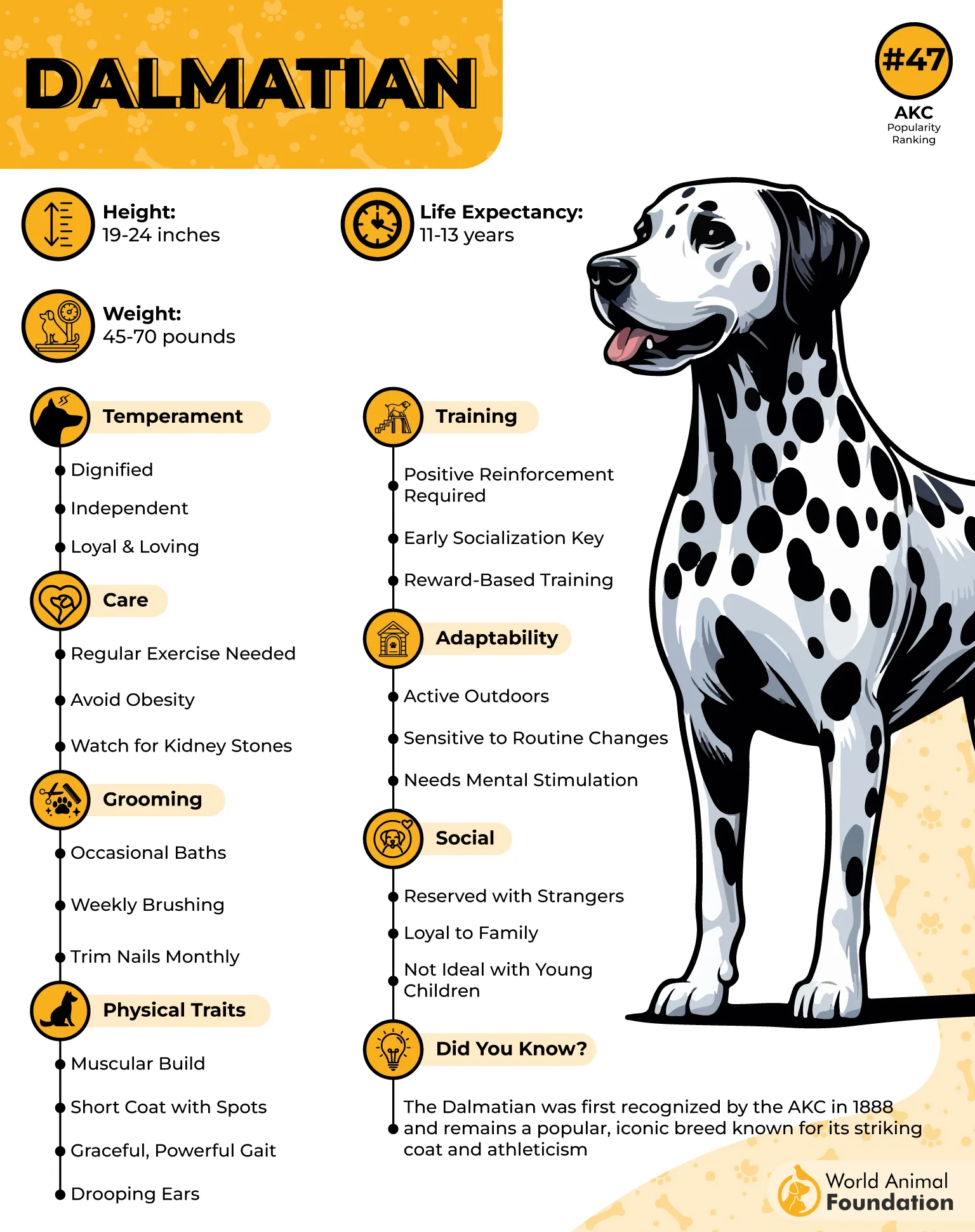
Temperament
Dalmatians are playful and intelligent, but their high activity level and sensitivity demand experienced, attentive handlers. Some can be timid or aggressive if not well-socialized early, and they may not tolerate rough handling from kids.
These smart dogs are known for having sharp memories, while this helps in training, it can also mean they hold on to negative experiences for a long time. Additionally, their tendency to be reserved with strangers and reactive toward other dogs adds to their unpredictability in social environments.
Fun Fact: Dalmatians are famous for their historic role riding alongside fire trucks, but without enough daily exercise, their spirited nature can cause chaos at home.
5. Siberian Husky
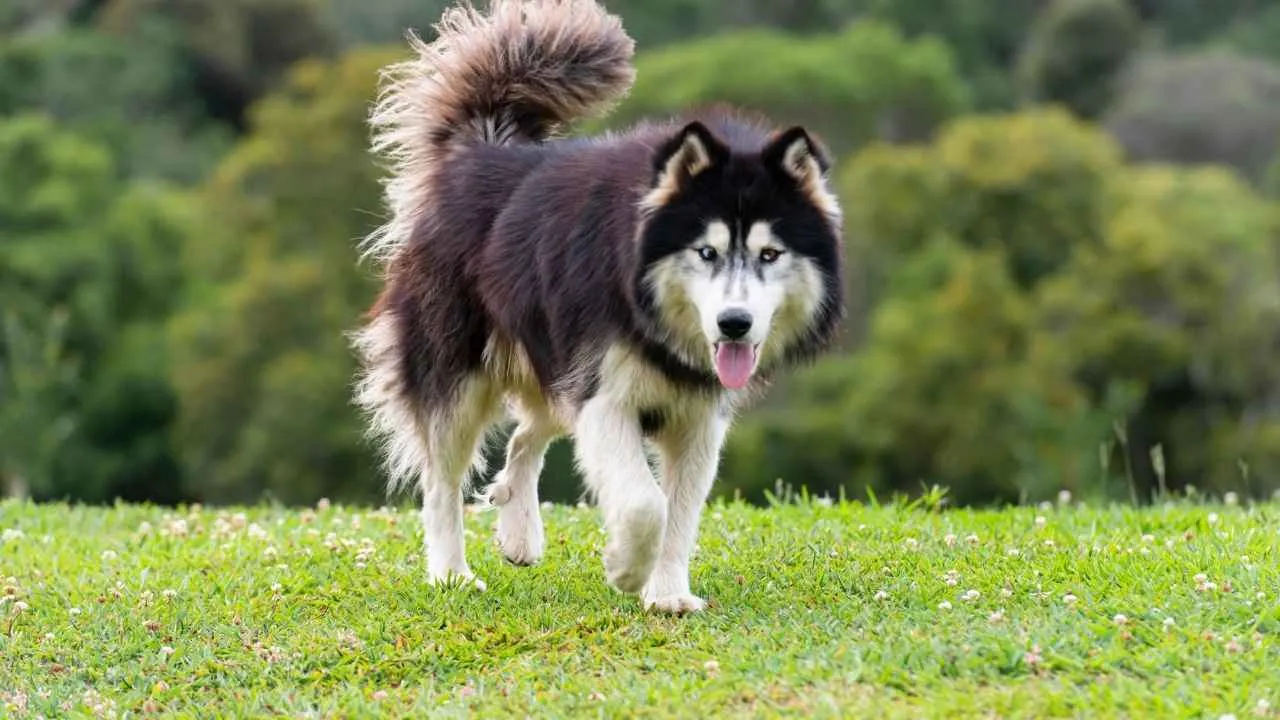
The PDSA notes that Siberian Huskies are best suited to owners who have experience with the breed. With their stunning looks and energetic personalities, Siberian Huskies often attract first-time dog owners, but they’re not always a practical choice.
Despite their friendly disposition, Huskies are high-maintenance dogs that demand time, energy, and patience. Their thick double coat sheds profusely, and their boundless energy can easily become destructive without proper outlets. Not to mention, their love for howling and digging makes them a tough fit for suburban living.
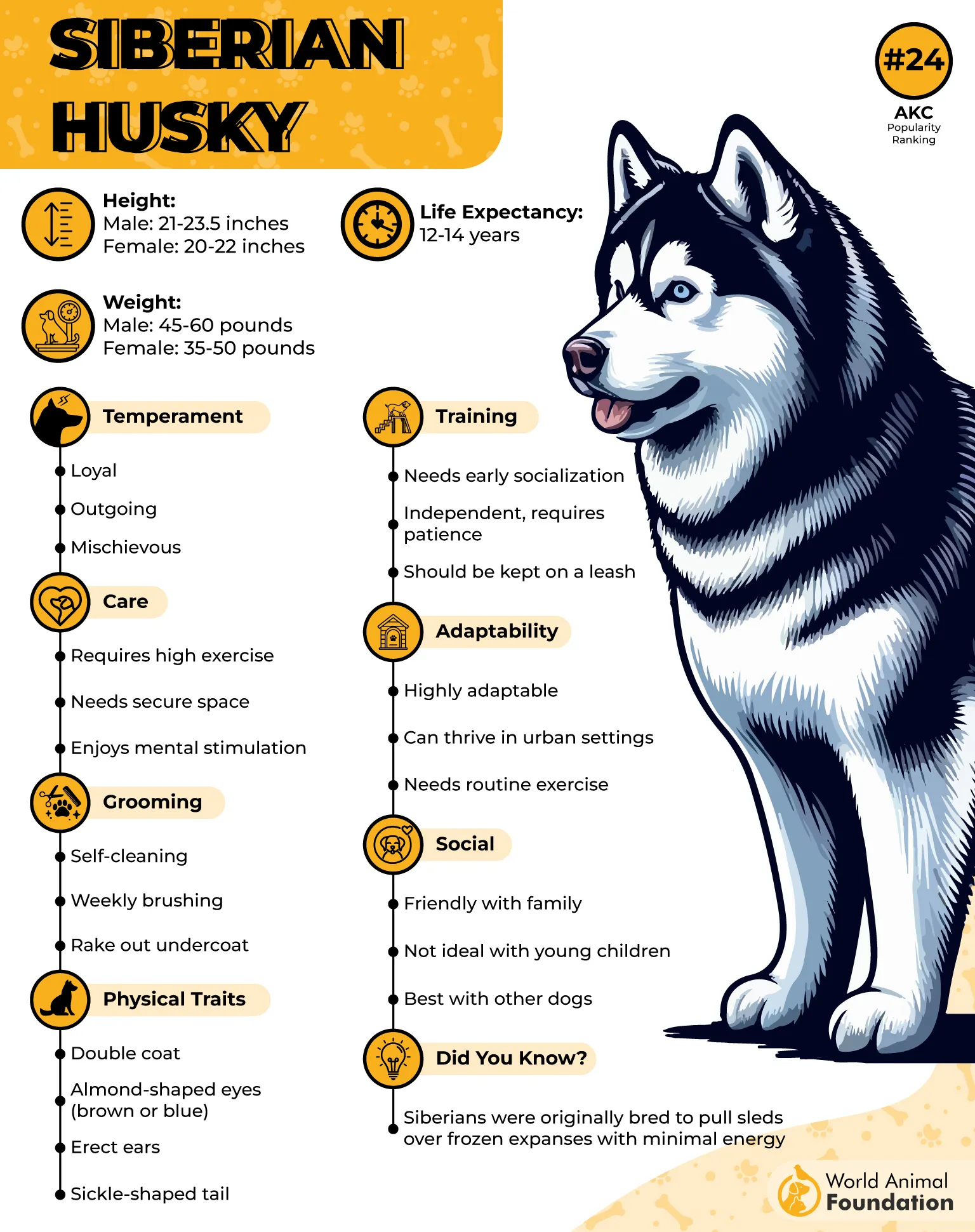
Temperament
Siberian Huskies are intelligent, people-loving dogs, but their independence and stubborn streak make training a significant challenge. They’re known for being escape artists and require secure fencing to prevent impromptu adventures.
While generally friendly, their strong prey drive can be an issue around small pets or when children behave unpredictably. Huskies aren’t known for aggression, but their wolf-like instincts and high energy mean they need structured environments and experienced handlers.
Fun Fact: Siberian Huskies were bred to run long distances in freezing climates and can go for hours without tiring, making them one of the fastest and most enduring sled dog breeds.
6. Alaskan Malamute
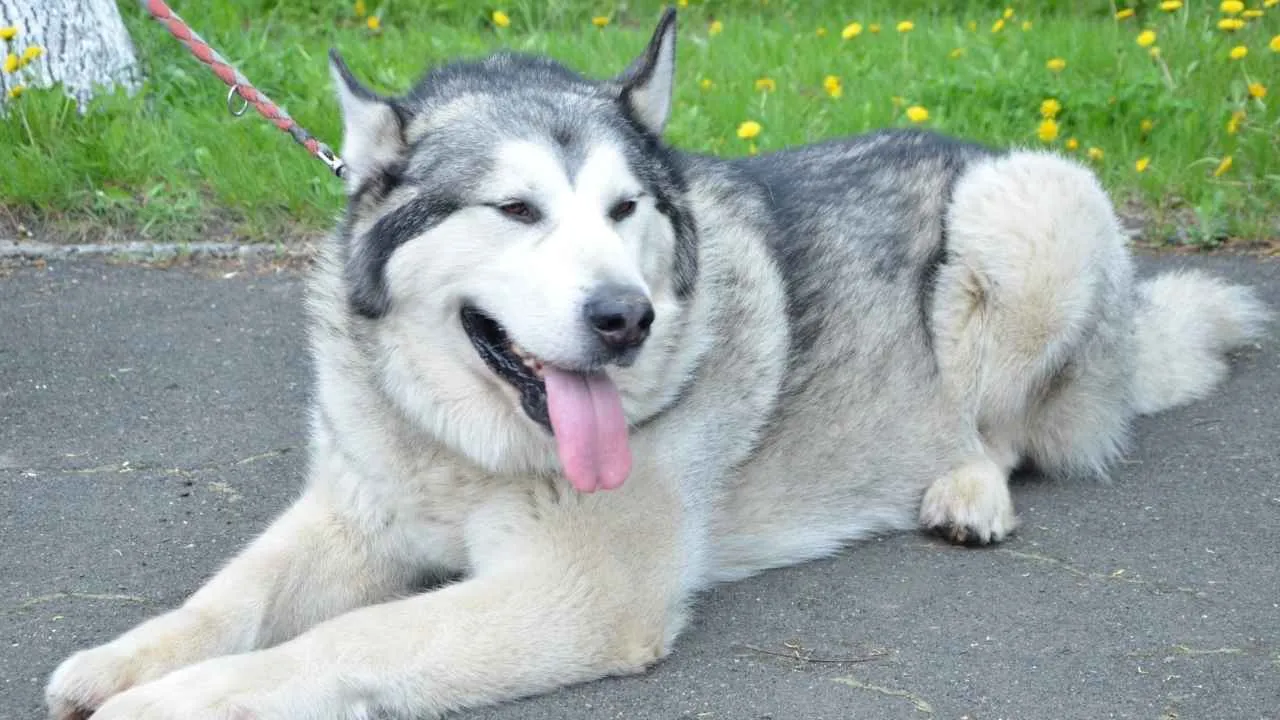
With their majestic looks and snow-loving spirit, Alaskan Malamutes often attract admiration, but they’re not always a good fit for every household. These large, powerful dogs were bred for endurance and hauling heavy loads in harsh Arctic conditions, which means they come with high energy needs, a thick coat suited for cold climates, and a level of independence that can frustrate novice dog owners.
Their size and exuberance can also make them too much for families with small children or people living in warmer areas.
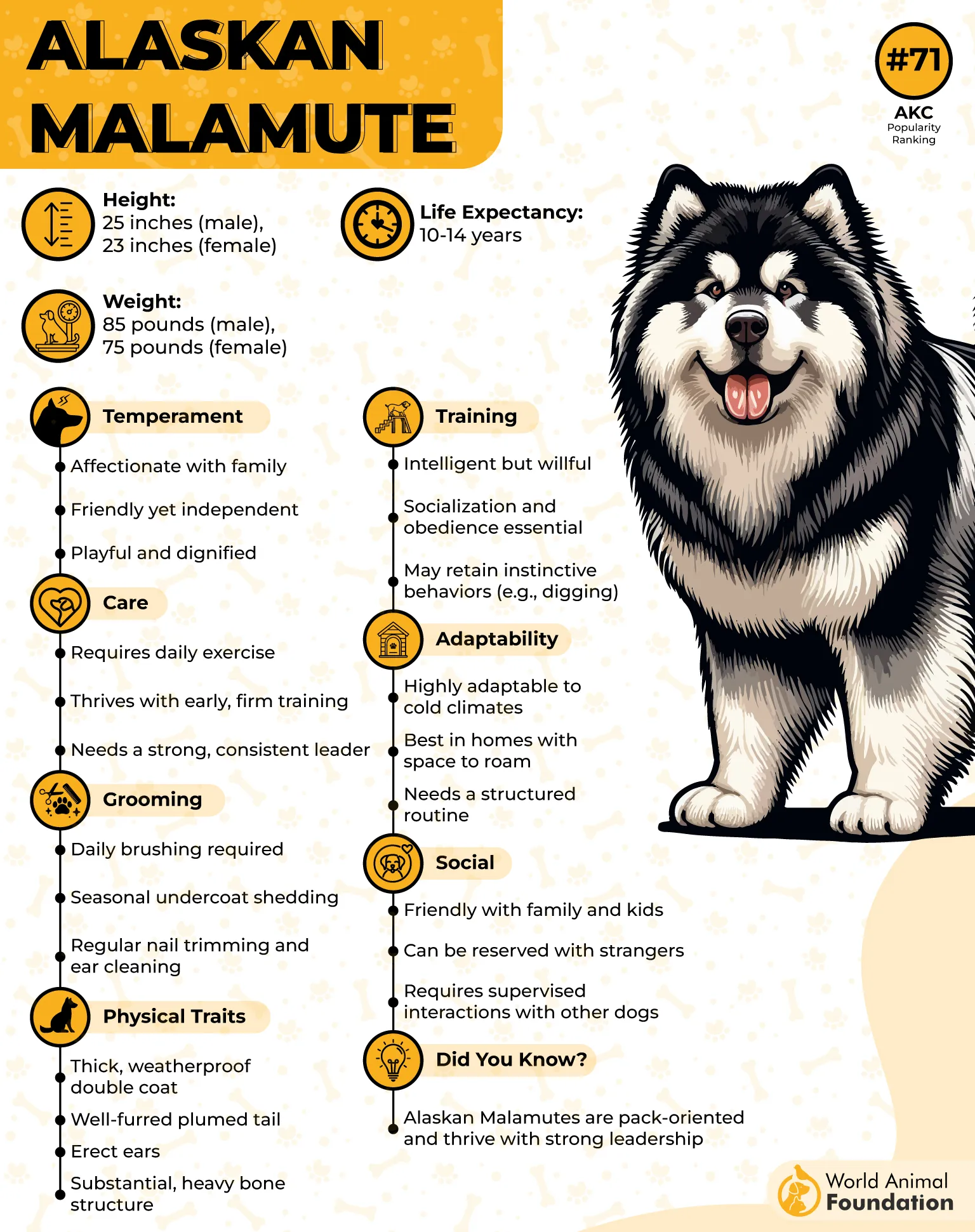
Temperament
These large dogs are pack-oriented and thrive on companionship, but their independent streak often shows through in training. They’re intelligent but strong-willed, which means commands might be ignored without consistent, positive reinforcement.
Their strong prey drive makes them likely to chase smaller animals, and their exuberance can lead to unintentional injuries during play. These dogs are happiest when given a job and plenty of physical activity; without it, boredom can quickly lead to destructive behavior.
Fun Fact: Alaskan Malamutes shed heavily, especially twice a year, making grooming a significant commitment, something potential owners should seriously consider before bringing one home.
7. Australian Cattle Dog
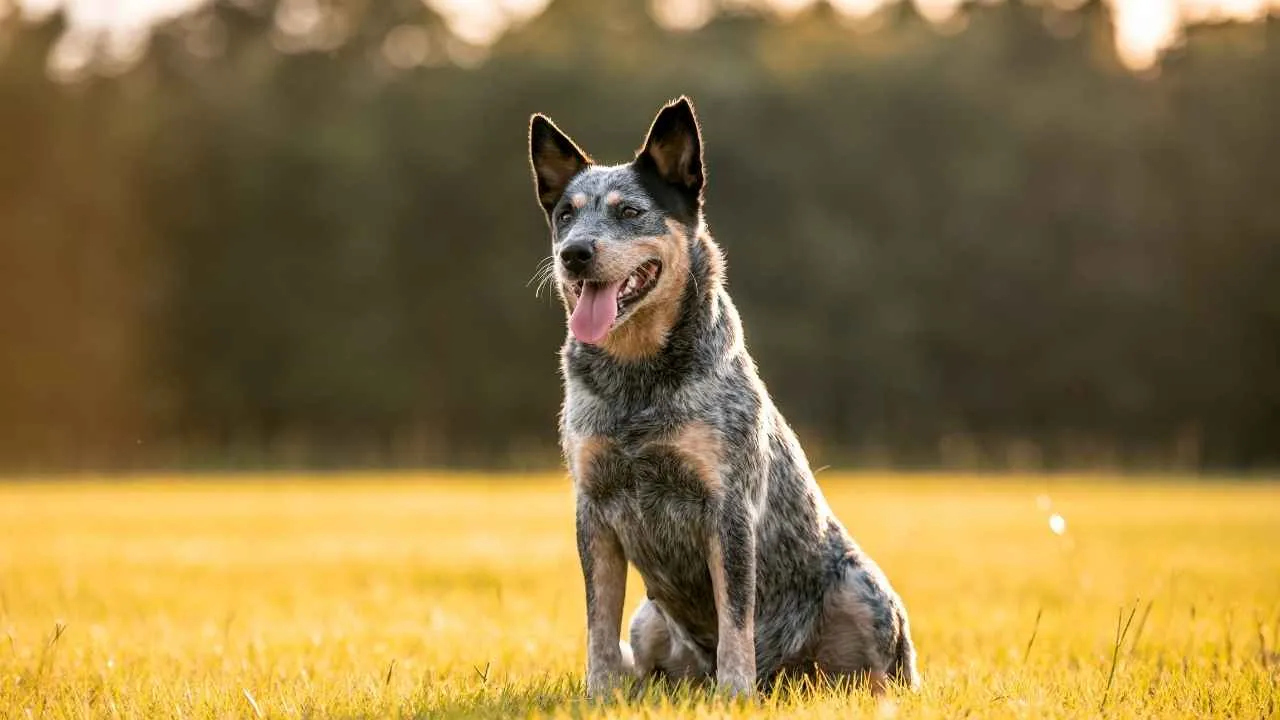
The Australian Cattle Dog may be a loyal, intelligent companion for the right owner, but it’s far from an ideal choice for many families, especially those with small children or limited time for exercise. Bred for herding livestock in demanding environments, this breed thrives on constant activity and mental challenges.
Without a structured routine and proper training, their instinctive behaviors can quickly become problematic in a home setting. These dogs may nip at kids to “herd” them or get overly physical during play, leading to unintended injuries.
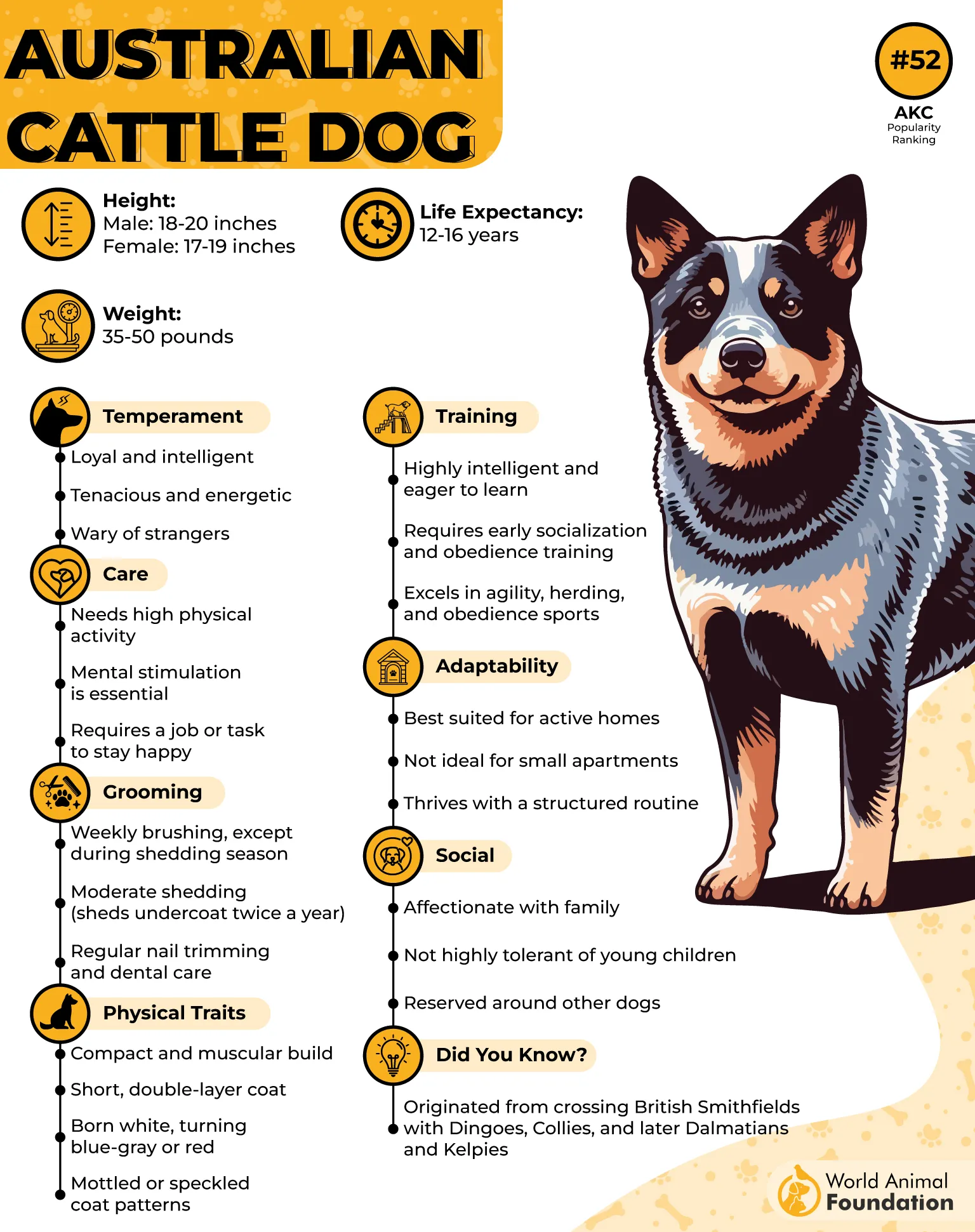
Temperament
These herding dogs are smart and quick learners, but they are also stubborn and intensely independent. This combination requires confident, experienced handlers who can provide consistent boundaries. They’re naturally wary of strangers, and often this dog’s aggressive nature toward unfamiliar dogs makes socialization essential.
Their protective nature can be an asset, but it may also translate into over-guarding behavior if not properly managed. Without a job to do, they often invent their own, and that’s when the trouble begins.
Fun Fact: If left unstimulated, this aggressive dog may resort to high-speed zoomies or rough play that can easily overwhelm or knock over children.
Conclusion
Choosing the right dog for your lifestyle is just as important as choosing a dog at all. While every dog has the potential to be a loving companion, certain dog breeds present challenges that may not be ideal for all households, especially for first-time owners, families with small children, or those with limited time for training and socialization. Breeds like the Akita and Australian Cattle Dog can be fiercely loyal, but their strong protective instincts, high energy, or independent nature require experienced handlers to bring out their best traits.
Other breeds, like the Chesapeake Bay Retriever and German Shepherd, are incredibly intelligent but often demand more structure, training, and mental stimulation than the average pet owner is prepared to provide. Even small dogs like Shih Tzus and Yorkshire Terriers can become difficult without consistent grooming or boundaries, while high-energy breeds like Pit Bulls and Australian Shepherds need space, attention, and plenty of activity to avoid behavioral issues.
Whether you’re adopting from a breeder or supporting an animal rescue, it’s essential to do your research and understand each breed’s needs. Avoiding a mismatch can prevent future problems and ensure that your new furry friend, whatever the breed, is a well-loved and well-adjusted member of the family.


